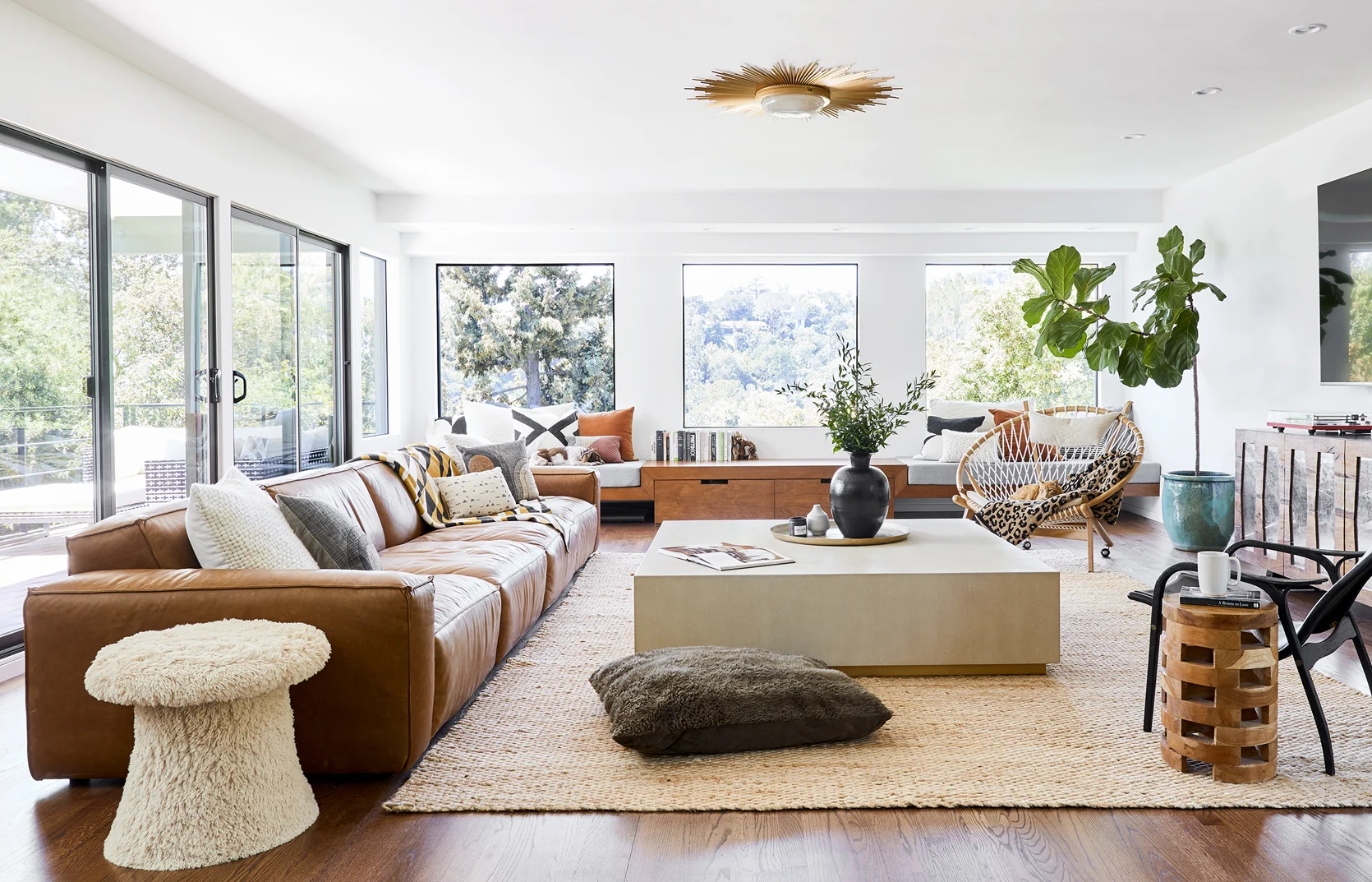The mid-century modern (MCM) design is a style that emerged in the mid-20th century, roughly between the 1940s and 1960s, and has since become a timeless design movement. Known for its clean lines, minimalism, and focus on functionality, mid-century modern aesthetics have captured the imagination of designers, architects, and homeowners alike. A mid-century modern living room is a perfect way to blend the old with the new, creating a space that feels contemporary while staying true to the principles of the past.
In this article, we’ll dive deep into what defines a mid-century modern living room, explore how to incorporate its key elements, and provide tips on how to create a living room that embodies this design philosophy.
What Defines Mid-Century Modern Design?
Before jumping into how to create a mid-century modern living room, it’s important to understand the core elements that define this style. Mid-century modern design is characterized by:
- Clean Lines and Organic Forms: Furniture in this design tends to have sleek, straight lines, but it also embraces organic curves and forms, mimicking nature.
- Minimalism: Functionality is key. This design shuns excess decoration, opting for practical, stylish pieces that serve a purpose.
- Use of Natural Materials: Wood, leather, and metal are commonly used in mid-century modern furniture. The balance between organic and man-made materials is a hallmark of this design.
- Bold Colors and Patterns: While the furniture may be minimal, the use of color isn’t. Rich, earthy tones like mustard yellow, burnt orange, olive green, and teal are common. Geometric patterns, especially in textiles, bring a playful vibe to the space.
- Blurring Indoors with Outdoors: Large windows, indoor plants, and the use of wood elements bring nature into the home.
- Iconic Furniture: Think Eames Lounge Chair, Noguchi Coffee Table, and Saarinen Tulip Chairs—these iconic designs have become symbols of mid-century modern style.
Incorporating Mid-Century Modern Elements in Your Living Room
Designing a mid-century modern living room is all about blending practicality with aesthetic appeal. Here are key elements you’ll need to consider when planning your space:
1. Furniture Selection
Furniture is the most crucial aspect of mid-century modern design. When selecting furniture for your living room, opt for pieces with simple, clean lines. Look for sofas, chairs, and tables that are raised on slender, wooden legs, creating a sense of space and lightness.
- Sofas: A mid-century modern sofa is often low to the ground with a boxy frame. Choose a sofa in a solid color—gray, cream, or muted tones work well. However, if you want a pop of color, feel free to go bold with mustard yellow or teal.
- Accent Chairs: Choose a chair with an iconic design such as an Eames Lounge Chair or a womb chair. These chairs are not only aesthetically pleasing but also provide maximum comfort.
- Coffee Tables: The coffee table is usually central in a mid-century modern living room. Look for tables made from wood with tapered legs or tables that feature glass tops and metal legs, like a Noguchi coffee table.
- Shelving and Storage: Keep storage minimal but functional. Mid-century modern storage units often come in the form of credenzas or cabinets made from rich woods like teak or walnut.
2. Color Palette
Mid-century modern living rooms often feature a mix of neutral and bold colors. To create balance in the room, start with a neutral base—think white walls or light gray paint. This neutral backdrop allows the furniture and décor to stand out without overwhelming the space.
Add pops of color through accent pieces such as cushions, rugs, and artwork. Earthy tones like terracotta, mustard, or olive can be used in combination with bold hues like turquoise, orange, or even pink.
3. Natural Materials and Textures
Mid-century modern design is known for its balance of natural and man-made materials. To achieve this, opt for wooden furniture—teak, walnut, and oak are popular choices. Combine these wood elements with metal accents like brass or chrome for a touch of industrial flair.
Textiles should add warmth and comfort to your living room. Incorporate plush rugs, wool throws, and leather upholstery to create texture. You can also add geometric patterns through pillows, rugs, or wall art to inject a bit of personality into the room.
4. Lighting
Lighting plays a key role in mid-century modern design. Floor lamps and pendant lights with sleek, sculptural designs are iconic elements in this style. Look for lighting fixtures with brass or chrome finishes, or pieces that feature frosted glass globes.
Consider using a combination of task lighting and ambient lighting to ensure your living room is well-lit. Arc floor lamps and sputnik chandeliers are two signature lighting styles that can make a bold statement in your living room.
5. Bringing the Outdoors In
One of the defining aspects of mid-century modern design is the connection between the indoors and the outdoors. Large windows are a signature feature of mid-century modern homes, allowing natural light to flood into the room and providing a view of the outdoors.
If large windows aren’t an option, you can still bring nature into your living room by incorporating houseplants. Fiddle leaf figs, snake plants, and succulents are all great options for adding a touch of greenery. Use planters with clean lines or geometric shapes to maintain the mid-century modern aesthetic.
6. Artwork and Accessories
While mid-century modern design is minimalistic, that doesn’t mean you can’t have fun with artwork and accessories. The key is to keep it simple and cohesive.
Choose abstract art, geometric shapes, or bold, colorful prints to hang on your walls. Look for pieces with simple frames or canvas prints to keep the focus on the artwork itself.
When it comes to accessories, less is more. A few well-placed items, like a sculptural vase or a retro-inspired clock, can enhance the mid-century vibe without overwhelming the space. Avoid cluttering your living room with too many decorative items.
7. Flooring
For a mid-century modern living room, hardwood floors are a go-to choice. If your home already has natural wood floors, you’re in luck. If not, consider installing flooring in a light or medium wood tone like oak or walnut.
If hardwood isn’t an option, you can use area rugs to achieve the same effect. Opt for rugs with geometric patterns or bold colors to bring warmth and texture to the room.
Conclusion: Creating a Mid-Century Modern Living Room for Today
The beauty of mid-century modern design lies in its versatility. It’s a design style that can be adapted to suit modern living while staying true to its origins. Whether you live in a spacious suburban home or a cozy urban apartment, incorporating mid-century modern elements into your living room can create a stylish, functional, and timeless space.
By choosing the right furniture, colors, and accessories, you can bring the iconic mid-century modern style to life in your own home. Whether you’re a design enthusiast or just looking to refresh your living space, a mid-century modern living room offers the perfect balance between comfort, functionality, and artistic expression.




